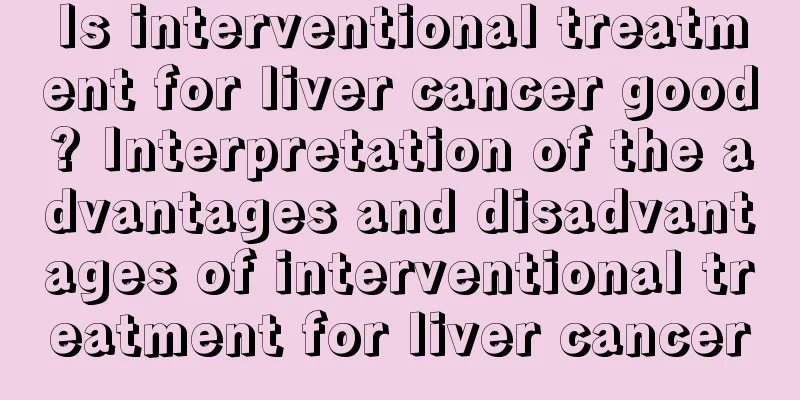How to treat rectal mucosal prolapse

|
The treatment of rectal mucosal prolapse requires attention to the correct method, which includes non-surgical treatment and surgical treatment. However, different symptoms require different surgical methods. After the operation, you must pay attention to rest, reduce activity, and speed up healing. 1. Non-surgical treatment Rectal prolapse in young children can usually heal on its own, so non-surgical treatment is the main approach. That is, as the child grows and develops, the curvature of the sacrum is formed and rectal prolapse will gradually disappear. Such as correcting constipation and developing good bowel habits. The time of defecation should be shortened and the stool should be restored immediately after defecation. If the prolapse lasts for a long time and the prolapse is congested and edematous, the patient should take a prone or lateral position and immediately perform manual reduction to push the prolapsed intestine into the anus. After recovery, a rectal digital examination should be performed to push the prolapsed intestinal tube above the sphincter. After manual reduction, plug the anus with a gauze roll and then fix both buttocks with tape to temporarily close the anus. This can prevent recurrence in the short term due to crying or increased abdominal pressure. If the disease lasts for a long time and the above methods are still ineffective, injection therapy can be used. Method: Inject 5% carbolic acid vegetable oil under the rectal mucosa or around the rectum, divided into 4 to 5 injections, 2 ml at each injection, with a total of 10 ml. The injection route can be through an anoscope to inject the drug into the submucosal layer under direct vision, so that the mucosa and muscular layer adhere to each other; or through the perianal skin, perform perirectal injection under rectal digital examination, so that the rectum adheres and fixes to the surrounding area. 2. Surgical treatment For adults with incomplete prolapse or mild complete prolapse, if the sphincter tension is normal or slightly weak, treatment similar to triple hemorrhoidectomy or rubber band ligation can be performed, or sclerosing agent injection can be used. If the sphincter is loose, anal ring reduction surgery or sphincteroplasty may be considered. The treatment of complete rectal prolapse in adults is mainly surgical, and there are four surgical approaches: transabdominal, transperineal, abdominoperineal and sacral. There are many surgical methods, but each has its own advantages, disadvantages and recurrence rate. No one surgical method can be used for all patients. Sometimes several surgical methods are needed for the same patient. 3. People with rectal prolapse must pay attention to rest and combine work and rest. During the 1 to 2 weeks of postoperative recovery, patients should reduce their activities and lie down to rest, which is extremely beneficial for complete postoperative recovery. Everyone should pay special attention to this. If the patient increases his activity or does other exercises after the operation, the abdominal pressure may increase, causing the treatment surface to separate, which may lead to complications such as bleeding. |
<<: What are the benefits of shoulder and neck care
>>: Is the reason for the growth of hangnails due to lack of nutrition?
Recommend
What are the advantages and disadvantages of sleeping naked
Sleeping naked is a word we often hear in our dai...
Typical safety configuration of electric heating faucet
With the development of science and technology, w...
What to do if you have teratoma in late pregnancy
Teratoma is a type of ovarian tumor, which is div...
What is the correct sleeping position after a coccyx fracture?
The coccyx is located behind the human buttocks, ...
What is the reason for losing weight quickly
Although everyone hopes to be thinner and slimmer...
What are the symptoms of late stage nasopharyngeal carcinoma?
Nasopharyngeal carcinoma is one of the most commo...
Early symptoms of nasopharyngeal cancer
Throat cancer is a common disease in life, but mo...
What are the early symptoms of skin cancer?
Skin cancer mainly refers to a change in skin can...
My tongue feels stiff when I speak
The tongue is very important to everyone. It is n...
Anion gap is too high
In life, many people will have a high anion gap d...
How to prevent the occurrence of prostate cancer? Dietary prevention principles for prostate cancer
Nowadays, men are under increasing pressure in wo...
What are the specific reasons for itchy ears?
Sometimes in life, we feel itchy ears, but the sp...
Is ichthyosis hereditary?
Ichthyosis is an extremely rare disease in the wo...
How to care for postoperative pain in patients with laryngeal cancer
Laryngeal cancer is one of the common cancers in ...
What to do if the shoulder ligament is strained? It turns out that this is the best way to deal with it
Shoulder ligament sprain is a common condition in...









